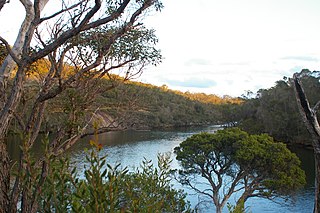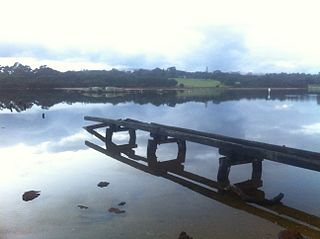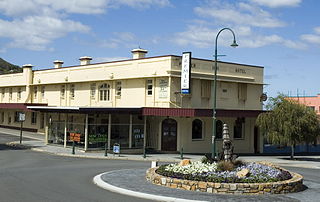
Albany is a port city in the Great Southern region in the Australian state of Western Australia, 418 kilometres (260 mi) southeast of Perth, the state capital. The city centre is at the northern edge of Princess Royal Harbour, which is a part of King George Sound. The central business district is bounded by Mount Clarence to the east and Mount Melville to the west. The city is in the local government area of the City of Albany. While it is the oldest colonial, although not European, settlement in Western Australia - predating Perth and Fremantle by over two years - it was a semi-exclave of New South Wales for over four years until it was made part of the Swan River Colony.

Katanning is a town located 277 kilometres (172 mi) south-east of Perth, Western Australia on the Great Southern Highway. At the 2016 census, Katanning had a population of 3,687.

The Great Southern Region is one of the nine regions of Western Australia, as defined by the Regional Development Commissions Act 1993, for the purposes of economic development. It is a section of the larger South coast of Western Australia and neighbouring agricultural regions.

Mount Barker is a town on Albany Highway and the administrative centre of the Shire of Plantagenet in the Great Southern region of Western Australia. At the 2021 census, Mount Barker had a population of 2,855.

Broomehill is a town on the Great Southern Highway between Katanning and Albany, in the Great Southern region of Western Australia. Its local government area is the Shire of Broomehill-Tambellup.

Pingelly is a town and shire located in the Wheatbelt region of Western Australia, 158 kilometres (98 mi) from Perth via the Brookton Highway and Great Southern Highway. The town is also located on the Great Southern railway line.

The Kalgan River is a river in the Great Southern region of Western Australia.

The King River is a river in the Great Southern region of Western Australia.

Kalgan is a small town in the Great Southern region of Western Australia.

Oyster Harbour is a permanently open estuary, north of King George Sound, which covers an area of 15.6 square kilometres (6 sq mi) near Albany, Western Australia. The harbour is used to shelter a fishing fleet carrying out commercial fishing and the farming of oysters and mussels via a dredged channel around Emu Point to the Emu Point Boat Pens. A significant number of waterbirds use the harbour for feeding. The place is currently a family tourist center. Oyster Harbour is fed by the King and Kalgan Rivers and discharges into King George Sound.

The Albany Fish Traps, also known as the Oyster Harbour Fish Traps, are a series of fish traps situated in Oyster Harbour near the mouth of the Kalgan River approximately 14 kilometres (9 mi) east of Albany in the Great Southern region of Western Australia.

Albany Town Hall is a public building on York Street in Albany in the Great Southern region of Western Australia. It was the first civic building constructed in the town.

Pyrmont, also referred to as Pyrmont House, is a residence located on Serpentine Road in Albany in the Great Southern region of Western Australia. It is one of the oldest buildings in Albany.

McKenzie House, also referred to as the White House, is a residence in Albany in the Great Southern region of Western Australia.

The Residency Museum, also referred to as the Residency Building, is an exhibition space at the Museum of the Great Southern in Albany in the Great Southern region of Western Australia.

Scots Uniting Church, originally known as the Scots Presbyterian Church, is a church in Albany in the Great Southern region of Western Australia.

Vancouver House, also known as the National Bank building, is a heritage listed building located on Stirling Terrace overlooking Princess Royal Harbour in Albany in the Great Southern region of Western Australia.

The Lower Kalgan Hall is a heritage listed building located on Nanarup Road not far from Oyster Harbour and the Kalgan River approximately 18 kilometres (11 mi) east of Albany in the Great Southern region of Western Australia.

Government Jetty, also known as the Kalgan River Jetty or the Fruit Landing, is a heritage listed structure located on Nanarup Road on the Kalgan River near Albany in the Great Southern region of Western Australia.

The Premier Hotel is a hotel and a heritage listed building located on the corner of York Street and Grey Street, opposite the Albany Town Hall, in Albany in the Great Southern region of Western Australia.





















